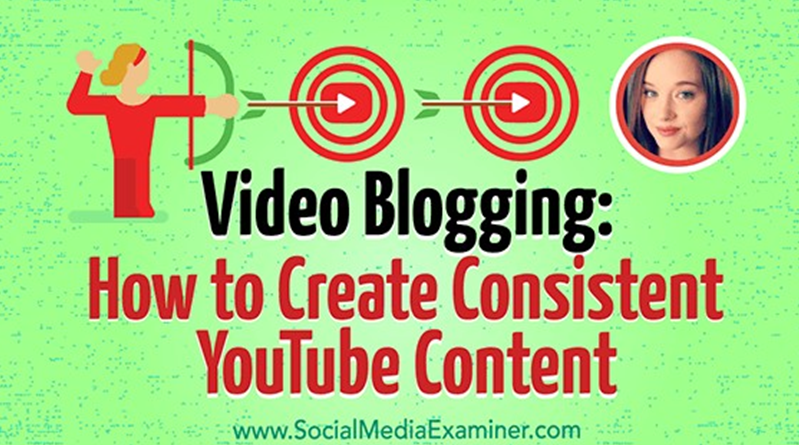Video Blogging: How to Create Consistent YouTube Content
Do you create videos to promote your business?
Have you considered starting a regular video blog?
To explore vlogging, I interview Amy Schmittauer.
More About This Show
The Social Media Marketing podcast is an on-demand talk radio show from Social Media Examiner. It’s designed to help busy marketers and business owners discover what works with social media marketing.
In this episode, I interview Amy Schmittauer, an online video expert. She founded Vlog Boss Studios and regularly produces awesome content for her YouTube channel, Savvy Sexy Social. She’s also the author of the brand-new book, Vlog Like a Boss: How to Kill It Online with Video Blogging.
Amy explores how video blogging can help your business.
You’ll discover what you need to start your own video blog.
Share your feedback, read the show notes, and get the links mentioned in this episode below.
Listen Now
Listen now: Play in new window | Download
You can also subscribe via iTunes, RSS, or Stitcher.
Here are some of the things you’ll discover in this show:
Vlog Like a Boss
What Is Vlogging?
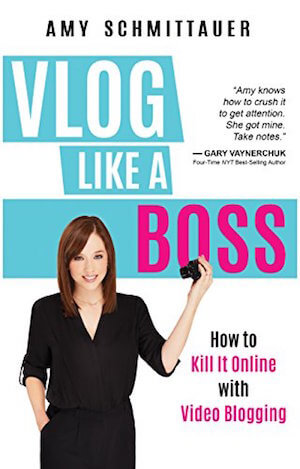
Vlog Like a Boss by Amy Schmittauer.
The term vlog builds off the word blog, and a vlog is simply a blog in video form. In a vlog, you can share anything you might do in a blog post, such as a tutorial or a story from your life.
Consistency is best for vlogging. If you post a vlog here and there, you won’t gain much traction. Amy says most vlogs that do well have a regular schedule.
I ask Amy about how using YouTube for vlogging is different from the other ways people use YouTube. Amy says the purpose of a vlog is to help people discover you. Videos that may be suitable for YouTube but that don’t help people discover you, such as a product commercial or an introduction to your company, don’t make great vlog posts. To be discovered, think of the users who are searching for a concern, a specialty, or the answer to a question. Think about what a potential customer or audience member might want to know, create a video about the topic, and upload it to YouTube.
Listen to the show to discover Amy’s thoughts about vlogging on mobile apps like Snapchat and Instagram, which have video and social.
Amy’s Vlog
When Amy launched Savvy Sexy Social, she was just getting started as a social media marketer. She thought teaching people the best way to do things on social media would to attract an audience and potential clients. She wanted her vlog to be informative and fun. She didn’t want social media to feel like a chore.
To juggle her content marketing with her client work, Amy says she scheduled her vlog posts to appear three days a week but she created the week’s videos all in one day. She would pick three topics (which could be an app, a product, or a general social media tip), record the videos sitting in front of her bookshelf, and then edit and schedule them for the rest of the week.
Amy emphasizes that people didn’t have to know who she was to find her videos via search. They just needed to have a question about a topic in her videos. For instance, Amy created a video about a hack to make tweets a little longer. She thought the topic was something new that people didn’t know much about, and the video became one of her popular vlog posts. The video’s headline focused on the Twitter tip but the video also introduced viewers to Amy.
Amy shares the simple vlog format she used for a long time. She introduced her topic, delivered information about the topic that her viewers would value, and gave an actionable item that would give them results right away. Then she wrapped up with, “By the way, I’m Amy. Hope you can subscribe and stay tuned.”
In the last year, Amy says she’s been having fun with her format so her community could get to know her a little more personally. For instance, throughout January, she documented the journey of launching a book. This approach was more of a lifecasting vlog, but her audience was learning through Amy’s experience. Amy says that her approach in January is an example of “show, don’t tell,” which is a powerful formula.
Listen to the show to hear Amy and I talk about the power of YouTube as a search engine.
What It Takes to Vlog
I ask Amy about her advice for anyone who isn’t sure they’re funny or have what it takes to appear on camera. When you feel that way, Amy says the most important thing you can do is develop a strong message before you begin your video. (Amy thinks this point is true whether you do a video, written, or photo blog.) She stresses that when you know what content you need to deliver, sitting in front of the camera (or a blank page) doesn’t feel as intense.
Amy says you develop a presence on camera through practice and by focusing on the camera as if it’s a person. Amy says the camera is a vehicle delivering your message to people. When you talk to viewers the way you talk to another person, you do much better on camera.
Amy believes people have trouble being on camera for two reasons: They feel silly sitting alone in a room talking to a camera or they feel like they’re talking to thousands of people. Either way, these mindsets can make a person appear unnatural on video. Amy says you should instead think about having coffee with someone.

Treat being on camera like having coffee with a friend.
Next, Amy and I talk about whether you need to be an extrovert to be on camera. Amy believes being on camera is easier for an introvert and she shares that she is an introvert (which totally surprised me). Amy reiterates that you simply need to respect the message you’re delivering. If you can talk to people about what you do and how you can help them, you can absolutely make video.
Listen to the show to discover Amy’s thoughts on the difference between speaking on camera and in front of a large audience.
ROI on Vlogging
As you’re considering the return on investment for vlogging, Amy says you need to focus on your goals. Don’t worry about vanity metrics such as followers, likes, and subscribers. Instead, measure what actually matters for your goals. For example, if your goal is to get clients, consider how many clients you need to acquire to make the hours you put into vlogging worthwhile.
Amy says this focus on goals made starting her vlog easy. Instead of focusing on how many people were following her, she focused on how much business she was getting because of her vlog. By focusing on her goals, Amy was motivated to make videos that offered value and use her network to get referrals.
To use her network, Amy would message people saying, “Hey, if you know anyone who would find this tip useful, could you please share this video with them?” When someone from her network shared her video, the share acted as a referral and the video demonstrated that Amy could do the work. With this approach, vlogging has brought Amy more clients than her other marketing efforts.

At the beginning, Amy focused on creating videos that offered value and getting them out there.
Amy stresses that goals and milestones are important for determining your ROI. Your goals help you determine what needs to happen for vlogging to be worthwhile, how much time to give vlogging until you start to see a return, and when you need to reassess.
Amy also thinks the ROI conversation is tough because people can be a little lazy about measuring things. Don’t just post a link. Post a trackable link that enables you to see whether your video has led to traffic or a conversion. Ask your viewers to take the natural next step after watching that piece of content. If they don’t, find out why.
Listen to the show to hear Amy’s advice about encouraging video viewers to follow a call to action.
The Benefit of YouTube Subscribers
Amy says YouTube wants to help growing channels be successful, and subscribers help your channel and videos gain momentum. When Amy posts a new video, subscribers receive a notification or see the video in their feeds, which encourages them to watch.

Subscribers receive notifications when you post a new video.
These early viewers help the video succeed for your channel and in search on YouTube. Without subscribers, you have to attract viewers to your video by sharing it elsewhere.
Amy says proving that you can start sessions on YouTube is also important. (In other words, your video attracts a viewer, who then stays on the channel or YouTube and keeps watching videos.) Starting sessions makes you a powerful channel to YouTube, which in turn makes YouTube want to send more people to your content.
Consistency is another element for raising your channel’s profile on YouTube. If you post a video only here and there, you don’t consistently bring traffic and grow. Your view time, watch time, and view count don’t regularly increase. Amy believes the key to consistency is starting on YouTube with intention and a plan. Uploading a video whenever you have something to post won’t be beneficial.
I ask whether community development through comments helps Amy build her reach. Amy says community development on YouTube impacts what people see on the home page much like it does on Facebook.
Each Facebook user sees more of the friends, pages, and other content that they like, share, or comment on. On the YouTube home page, people see the channels they watch and interact with almost exclusively. As a result, someone who watches, comments on, and shares Amy’s videos might not realize they’re not subscribed to her channel. They’ll still see her video in their feed.
Because YouTube always wants you to have something interesting to watch, Amy says YouTube is one of the few platforms where a two- to five-year-old video can still work for you today. Again, momentum helps the life a post. One of Amy’s most popular videos is from four years ago and it still brings in a lot of traffic every month.
Listen to the show to hear more of Amy’s thoughts on how YouTube rewards useful content.
Examples of Great Vlogs
Today, show-don’t-tell videos, where people shoot video throughout the day, are among the most powerful. Amy watches many business vloggers and thinks Gary Vaynerchuk does a fantastic job of vlogging about what it’s like to run his business. (Gary caught onto vlogging from his friend Casey Neistat, who’s another great example, although Casey isn’t vlogging daily anymore.)
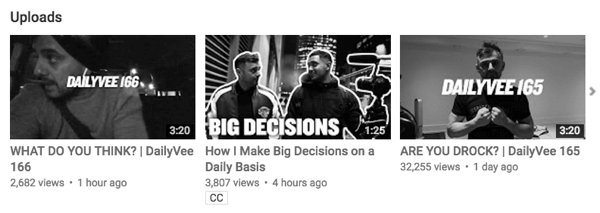
Gary Vaynerchuk vlogs about running his business.
Both Gary and Casey turn the mundane and basic into a compelling story. However, they’re also high-profile examples with skills and resources beyond what most small business owners have: Gary employs a full-time cameraperson and Casey is a filmmaker.
For an example of a vlogger creating interesting video with just a basic camera, Amy suggests checking out Justine Ezarik (iJustine). Justine captures video while she’s out and about, and stitches together stories from that content. She also sets up her camera at home for things like baking. Justine became popular in Twitter’s early days. She started by live-streaming her entire life and is now a YouTube veteran.
Amy says that if you really break down what’s happening in Justine’s videos, it’s not a big deal. However, Justine makes everything she does interesting, funny, and entertaining.
We also talk about examples focused on technology. I mention Steve Dotto, who does simple software reviews in his own folksy style because he knows people search YouTube for these reviews. Amy says her tech-focused friends review the latest devices on camera. This approach is fantastic because a lot of people go to YouTube to see hands-on demonstrations and because the reviews help you build credibility as a tech expert.
Minecraft and unboxing are topics for which people usually don’t appear on camera. In Minecraft videos, players share cheats and techniques for playing. Unboxing videos tell a short story about receiving and opening a package. Amy says one of the most subscribed channels is a kid unboxing toys. The channel has become so popular that everyone involved quit their job and makes money with YouTube.
Steve Spangler’s Sick Science is a popular channel focused on education. He does one-minute experiments and follows up with a question.
Amy says having a product is helpful, but you can create popular vlogs about any topic. You just have to tell a story.
Listen to the show to hear Amy discuss YouTube’s demographics.
Types of Video Content
To clarify the different types of video you might create, I ask Amy what videos someone could create for a hot-air balloon business. Amy says you need to remember that the customers you’re trying to attract may not yet know if they want to ride in a hot-air balloon. However, they might be thinking about going to your town for a destination vacation. Therefore, Amy suggests doing videos about things that are relevant to your city, such as events or cool touristy things that may include you.
The science and logistics of hot-air balloons are also interesting and behind-the-scenes videos might attract customers who are curious about hot-air balloons but haven’t thought about taking a ride. For people who might be afraid of riding in a balloon, you could create a video that helps break down common fears.
Amy says a real estate agent is another good example of clarifying the different types of content you can create. Real estate agents want to talk about the properties they’re selling but that content focuses only on the product. Instead, real estate agents need to think about what’s happening in the neighborhood, the school system, and nearby attractions.
When a real estate agent becomes an expert on his or her area as a whole, the content can attract a broader audience. For instance, someone who discovers a cool video about a great thing to do in Seattle might be relocating there and need a realtor to help him or her find a house.
Amy says the key is to think bigger than your product.
Listen to the show to hear about the types of videos Amy offers each week.
Discovery of the Week
Narro is an app that converts text articles into audio files so you can listen on the go.
To convert a text article into an audio file, you can use the Narro bookmarklet, Chrome browser extension, or iOS or Android app. Narro then adds the audio file to your listening feed. You select from a number of male and female voices, and you can alter the speed to make the voice sound more natural.
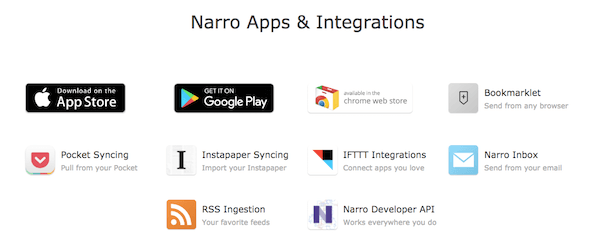
Narro converts text into audio.
For example, if you don’t have time to read today’s article on Social Media Examiner, you would either click the extension or bookmarklet. Narro will then scan that article’s text, convert it into an audio file, and put that file into your personal feed. If you subscribe to a feed (like Overcast), your audio file of the article shows up in your feed after a few minutes or so.
Listen to the show to learn more and let us know how Narro works for you.
Listen to the show!
http://traffic.libsyn.com/socialmediamarketing/SocialMediaMarketing-238-17-02-24.mp3?_=2
Key takeaways mentioned in this episode:
- Learn more about Amy and her book on VlogLikeaBoss.com.
- Read Vlog Like a Boss; How to Kill It Online with Video Blogging.
- Watch the Savvy Sexy Social YouTube channel.
- Check out Amy’s video on making tweets longer and one of her recent lifecasting vlogs.
- Listen to the podcast where Amy talks about getting videos to perform in search.
- Watch Amy’s first-look review of Adobe Spark.
- Explore lifecasting videos from Gary Vaynerchuk and Casey Neistat.
- Learn more about Justine Ezarik (aka iJustine) and watch her make donuts.
- Watch Steve Dotto and Steve Spangler on YouTube.
- Take a look at Ryan ToysReview, watch one of his unboxing videos, and read the story behind it.
- Check out Narro.
- Watch our weekly Social Media Marketing Talk Show on Fridays at 10 AM Pacific on Crowdcast, or tune in on Facebook Live.
- Learn more about Social Media Marketing World 2017.
- Get a Virtual Ticket.
Help Us Spread the Word!
Please let your Twitter followers know about this podcast. Simply click here now to post a tweet.
If you enjoyed this episode of the Social Media Marketing podcast, please head over to iTunes, leave a rating, write a review, and subscribe. And if you listen on Stitcher, please click here to rate and review this show.
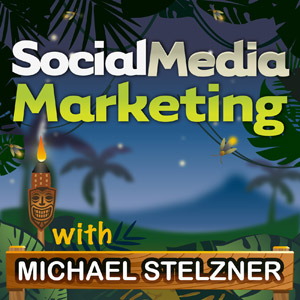
Ways to subscribe to the Social Media Marketing podcast:
- Click here to subscribe via iTunes.
- Click here to subscribe via RSS (non-iTunes feed).
- You can also subscribe via Stitcher.
What do you think? What are your thoughts on vlogging? Please leave your comments below.
By Michael Stelzner – Socialexaminer.com

